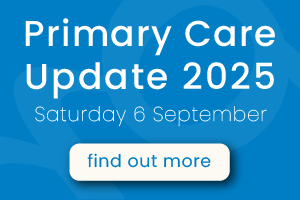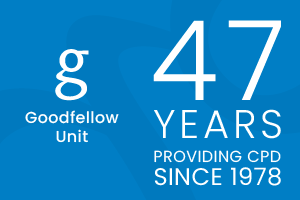This MedCase was first published in 2020. It was updated by Dr Hazel Fuiava, MBChB, Dip Paeds, FRNZCGP.
The New Zealand Cardiovascular Disease Risk Assessment and Management for Primary Care 2018 (NZ CVD Guidelines) advise caution in treating blood pressure in older people due to concerns about risks such as falls or orthostatic hypotension.1
The general target blood pressure of < 130/80 mmHg is suggested for those with few comorbidities and life expectancy > 5 years, but must be individualised based on likely benefits and risks of therapy.
This MedCase offers a framework for managing blood pressure in the older adult.
Mrs B is a 79-year-old woman who attends your practice for a repeat of her usual medications: enalapril 20mg once daily and atorvastatin 20mg once daily.
Mrs B has hypertension, hyperlipidaemia and grade 3a chronic kidney disease (CKD) with a stable estimated glomerular filtration rate (eGFR) of 50-55 ml/min/1.73m2 over the past 2 years and no proteinuria. She has no history of stroke or myocardial infarction, and does not smoke.
She is currently well and lives with her husband in their 2-bedroom unit nearby. She plays mah-jong and volunteers at the church Mainly Music group every week.
On examination today, Mrs B weighs 56kg with a BMI of 21 based on her height of 162cm. Her seated blood pressure at the last visit was 156/62 mmHg.
What do you do today?
Blood pressure in older adults: a fine balance
Treatment-related harms are more likely with increasing age, number of underlying comorbidities and medications.1 Postural hypotension is a risk for adverse effects; very low systolic BP (SBP) < 100 mmHg is associated with higher risk of serious falls.2
Frailty confers additional risk. There is no universally agreed definition of frailty, but it usually refers to vulnerable people at higher risk of medication-related adverse events, falls, worsening disability, or death.3 For frail patients, small changes in management may produce disproportionately large changes in health.
There is no specific definition for frailty, but patient may show the following signs:3
|
|
On the other hand: is under-treatment a form of ageism?
However, concerns about antihypertensive treatment risks in older people may not be borne out by data. An analysis of the Systolic Blood Pressure Intervention Trial (SPRINT) data, in which hypertensive patients were randomised to a treatment target of SBP 140 mmHg or 120 mmHg, found no difference in concerns about falling between the groups.4 The original SPRINT trial had reported a significant increase in syncope but not injurious falls.5
Additionally, older people generally have a higher CVD risk due to age and comorbidities, and potential treatment benefits are likely to be greatest in this population. In SPRINT, the risk of major fatal and non-fatal cardiovascular events and overall mortality was significantly lower among patients who achieved a target SBP < 120 mmHg than in those with a target of 140 mm Hg.5
You talk further to Mrs B and find that she has not had any falls or near-misses in the past few months. She feels energetic most days, and keeps fit by walking most days for at least 30 minutes. Her mood is generally good and she enjoys playing mah-jong with her friends every Friday. She eats a varied diet and tries to avoid adding salt to her food. You assess her as low risk for frailty.
Next, you check Mrs B’s sitting and standing blood pressures. These are 154/62 mmHg seated, and 156/68 mmHg standing.
Is it safe to lower Mrs B’s blood pressure further, given her low diastolic readings?
Low diastolic blood pressure (DBP) and isolated systolic hypertension (ISH)
Low diastolic BP (DBP) < 60-65 mmHg is frequently a cause for concern and may be more common among the elderly, who are most likely to have isolated systolic hypertension (ISH), defined as SBP >140 and DPB <90mmHG.
However, an analysis of the data from the Framingham Heart Study found that patients with ISH and low DBP < 70mmHg are at higher risk of CVD events both with and without antihypertensive treatment.6
Similarly, a recent analysis of SPRINT found that low DBP was not independently associated with the risk of cardiovascular events; rather, patients with low DBP were more likely to be those with other risk factors for poor prognosis such as previous cardiovascular disease, smoking, or chronic kidney disease.7
You explain to Mrs B that there are likely to be substantial benefits to improving her blood pressure, including reducing the risk of cardiovascular events such as heart attack and stroke. This is particularly important given her CKD. You suggest aiming for target SBP of 125-130 mmHg, adjusted as needed according to tolerance.
You also explain that it is usual to require more than one medicine to achieve adequate blood pressure control. Mrs B agrees that this seems like a good idea.
Which antihypertensive agent do you choose?
Treating hypertension in patients with chronic kidney disease (CKD)
Patients with stable CKD stage 3-4 have a 5-year cardiovascular risk of > 15% and reducing blood pressure is a key part of their overall management.8 Angiotensin-converting enzyme (ACE) inhibitors or angiotensin II receptor blockers (ARBs) are recommended as first-line antihypertensive therapy, with the addition of a calcium channel blocker as required.8
Higher target blood pressures have previously been tolerated in patients with CKD, but guidance suggests that more aggressive blood pressure targets of < 130/80 mmHg are not only appropriate but recommended to reduce risk in this patient group.9
The ACCOMPLISH trial found that the combination of ACE inhibitor and dihydropyridine calcium channel blocker (e.g. amlodipine, felodipine) was superior to ACE inhibitor plus thiazide diuretic, and current guidelines recommend a calcium channel blocker as the best second-line choice for patients with CKD.8
You recommend that Mrs B starts treatment with amlodipine 5mg and ask her to have a blood test in two weeks, then return to see you for blood pressure assessment. She will also let you know of any new complaints and you alert her to common side effects such as facial flushing or leg swelling.
You explain she will need regular monitoring and potential dose adjustments to reach the target SBP.
Mrs B is happy with this plan and leaves with her new prescription.
Practice points
- Target blood pressure in people aged > 75 must be individualised based on their risk factors and preferences.
- A target systolic blood pressure (SBP) of 120-130 mmHg is likely to result in better cardiovascular outcomes for older people.
- Lower SBP was not associated with increased concern about falls, in a recent analysis of the SPRINT data.
- Low diastolic blood pressure (DBP) is associated with other risk factors for poor cardiovascular outcomes, and antihypertensive therapy should focus on controlling SBP only.
- Frailty and postural hypotension may confer additional risks of treatment-related harm; assess for these at each visit.
This MedCase was written by Dr Vicki Mount, BSC/BCom, MBChB, MRNZCGP, DipPaeds, with expert review by Dr Hari Talreja, MD, DNB, MPH (Harvard), FRACP, Certified Hypertension Specialist.
References
Recognition of Learning Activities
Don't forget to log your time with The Royal New Zealand College of General Practitioners portal for recognition of learning activities.


